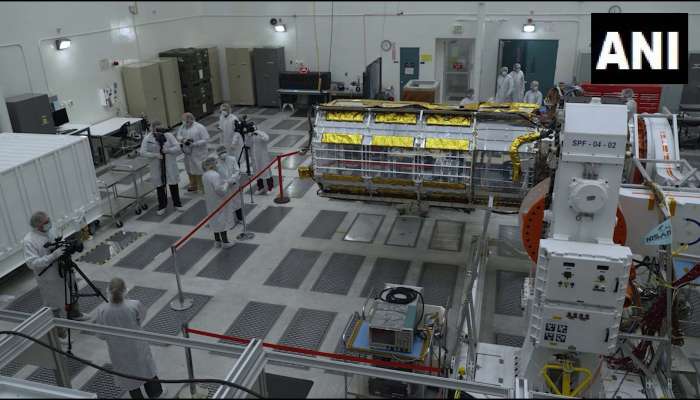
New Delhi: The Indian government has put a lot of thrust on the space sector in the last few years. India’s Minister of State (Independent Charge) Science & Technology; Minister of State (Independent Charge) Earth Sciences Jitendra Singh recently said that National Aeronautics and Space Administration (NASA) and the Indian Space Research Organization (ISRO) have jointly manufactured an earth science satellite named, NISAR (NASA-ISRO Synthetic Aperture Radar).
Singh said, the mission objectives of the satellite are- Design, Develop and launch Dual Frequency (L and S band) Radar Imaging Satellite and to Explore newer applications areas using L & S Band microwave data especially in surface deformation studies, terrestrial biomass structure, natural resource mapping and monitoring and studies related to dynamics of ice-sheets, glaciers, forests, oil slick among others.
The global space economy is currently valued at about USD 360billion.
The Minister said, the satellite is configured with I-3K bus and the instrument identified for SAR is based on the innovative Sweep SAR technique configured in both L and S band in polarimetric configuration for wide swath and high resolution.
The spacecraft will orbit the Earth in a sun synchronous orbit of 747 Km with an inclination of 98.4 degree for a 12-day repeat cycle.
The total expenditure incurred on realization of NISAR satellite by ISRO as on February, 2023 is Rs. 469.40 Crore, excluding launch cost.
India’s space programme stands out as one of the most cost-effective in the world. India has earned worldwide recognition for launching lunar probes, building satellites, ferrying foreign satellites up and has even succeeded in reaching Mars.
From 1999 till December 2021, a total of 342 foreign satellites from 34 countries have been successfully launched on board Indian Polar satellite Launch Vehicle (PSLV) on a commercial basis.
Indian Space Research Organisation (ISRO) has been the primary aerospace service provider in the space segment since its inception, in 1969. However, with the changing ecosystem, India has seen a boom with many private players entering the space sector and playing key roles in the Indian space economy. This major shift would revolutionise the sector by reducing costs and turnaround time, with innovation and advanced technology, according to India Brand Equity Foundation.
In the following figure, the investment growth can be witnessed in the Indian space start-up industry. In the year 2022, there has been a spurring increment in investments by almost double the amount in the previous fiscal year. It has been also witnessed that several new private players are entering the space tech industry of India.
ISRO has launched a total of 129 satellites of Indian Origin and 342 foreign satellites belonging to 36 countries since 1975.
India’s Gaganyaan project under ISRO envisages demonstration of human spaceflight capability by launching crew of three members to an orbit of 400 km for a three-day mission and bring them back safely to earth, by landing in Indian sea waters. If India becomes successful in this mission it will be the fourth country in the world to have sent human to the space after the US, Russia and China.